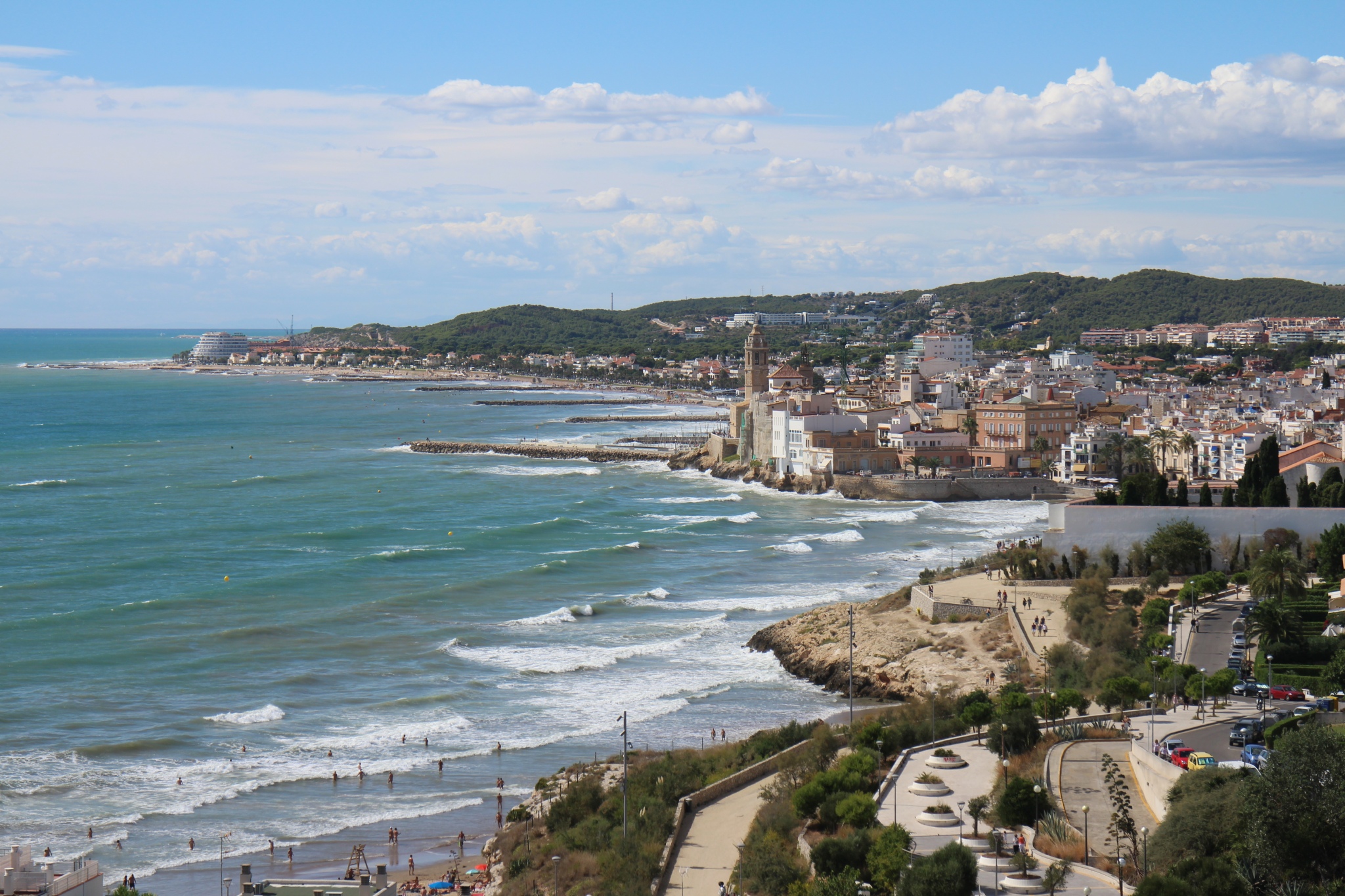With a shore that stretches north to the border of France and south to paella-proud Valencia, where crystalline sands cradle sporadic waves of blue, the Mediterranean coast of northeastern Spain is rife with stretches of crisp golden sand, prime for lazing under the hot Spanish sun while nursing a plastic vaso of ruby red sangria.

Barcelona, Spain (Photo: annaspies via Flickr)
Summers in Barcelona present a conundrum as the city’s adjacent beaches tend to overcrowd with rowdy weekenders. When the August sun is at its highest point, take a hint from the Barcelona denizens and catch a train up or down the coast to neighboring beaches. Conveniently connected by both the Metro system and Barcelona’s regional trains, these coastal towns are just the right distance away for a calmer sojourn under the sun.
Bogatell
Considered one of Barcelona’s city beaches, Bogatell is slightly out of the fray of busy Barceloneta, where weekend backpackers scatter across the sand and leave very little space for anything but lying still. Bogatell, however, is not as well-known among Barcelona visitors who crave a few hours of sun before retreating to sightseeing and tapas tasting. At not even a half-mile long, Bogatell is accessible on foot (a 30-minute walk from Barceloneta) or via the L4 Metro line stops at Bogatell or Llacuna. Strategically placed chiringuitos (beach bars) mean that the next refreshing cocktail is never too far away.
Paseo Maritimo del Bogatell, 80, Barcelona
Badalona
One of the first out-of-city beaches along the north coast is Badalona, a beachside town in every sense of the word. Sitting approximately 15 minutes from Barcelona proper, Badalona encompasses three unique beaches: one with a more urban appeal (El Gorg), a second that is slightly suburban and less crowded (El Manresà) and a third central beach that fuses the two others (Platja del Centre). The 820-feet Petroleum Bridge that stretches from the coast may not sound inviting given its industrial name, but pedestrians can walk the full length of the bridge to take in views of the north, south and the distant mountains. Both the Metro and RENFE trains reach Badalona from the center of Barcelona.

Sitges beach, Spain (Photo: Robert Basic via Flickr)
Sitges
The seaside town of Sitges actually comprises 17 individual beaches, but collectively the coast caters to families and the LBGTQ community. Beachgoers can rent paddle boats and float from cove to cove or wade a considerable distance into the water along the ever-so-slightly graduated sandbar. The hills that grace the Sitges coast allow for casual morning or early-evening hikes along the water’s edge, with impromptu pit stops in clandestine coves for quick, refreshing swim breaks, plus the option to go au natural.
Castelldefels
Fourteen miles south of Barcelona sits Castelldefels, a quiet, residential beach town hugged by rounded hills on the southern border. The waves are calmer, the crowds are scarce and beachfront seafood restaurants dot the length of the three-mile coast where sand meets pavement. Trains depart from Barcelona’s Sants station and travel to the Platja de Castelldefels station in 32 minutes. From the train station, the beach is a leisurely five- to eight-minute walk.
Passeig Maritim, 157, Castelldefels

Pineda de Mar beach, Spain (Photo: Miquel Bohigas Costabella via Flickr)
The ‘de Mars’
Between Barcelona proper and Costa Brava lies an expanse of beaches, all of which finish with the “-de Mar” designation. RENFE Rodalies trains take passengers along the picturesque coast, where eyes can analyze each beach from the train before deciding whether to hop off at the appropriately named stations. Stops include Arenys de Mar, Canet de Mar, Sant Pol de Mar, Pineda de Mar and Malgrat de Mar, before the train terminates at the border of the Costa Brava in Blanes.

Blanes beach, Spain (Photo: Jose Gonzalvo Vivas via Flickr)
Blanes
Farther up the coast is a small resort town called Blanes, marking the start of the Costa Brava. These northern beaches are more placid than their southern counterparts, and it’s often easier to find adequate space on the sand to relax. Blanes’ varied nature also plays well to beachgoers who like a little bit of everything, from cliffside hiking options and a port on the northern end to long, wide stretches of sand running parallel to the coast. A charming boardwalk lined with palm trees and benches separates the sea from the Catalan town.
Passeig s’Abanell, 36A, Blanes
Barceloneta
If limited on time and unable to leisurely caress the Catalan coast via car or train, settling on the sands of Barceloneta is a considerable option, especially in the off season. Spend hours people watching, window shopping at surf shops and snacking on tapas at the handful of seafront restaurants, all while dodging skateboarders and rollerbladers. Spontaneous musical and dance performances can break out at any moment, particularly on the weekend. At the end of the day, take advantage of the within-walking-distance neighborhoods of El Born and El Gòtic for after-beach dinners and drinks.